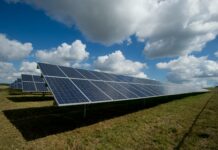
September 14-16 was BP Week 2020. It took place virtually this year. Six weeks ago, the company announced a new strategy to take the company to net-zero by 2050. This included plans to help the world get to ner-zero along with them. BP Week was their opportunity to go into more detail.
Some of the changes they foresee for the next 30 years are:
- A 10-fold increase in low carbon investment to around $5 billion per year.
- A 20-fold increase in developed net renewable generating capacity to 50 gigawatts.
- A doubling of customer interactions to 20 million per day.
- A near 10-fold increase in EV charging points to over 70,000.
- A 40% reduction in oil and gas production – becoming more focused, more resilient and higher value.
- Energy partnerships with 10 to 15 major cities and three core industries
- Emissions reductions of 30% to 40% on Aims 1 and Aims 2.
Spencer Dale, Group Chief Economist, introduced this year’s Outlook with the caveat that it is not meant to predict the future. “Rather,” Spencer said, “the role of the Outlook is to help better understand the range of uncertainty we face. Which developments seem pretty similar across a range of scenarios? And which are highly dependent on the precise policy or technology assumptions made? Improving our understanding of this uncertainty is important input into designing a strategy that is robust and resilient to the range of different outcomes we may face.”
He stressed that BP’s new ambition is to help the world reach net-zero. To do so, the Outlook has three possible scenarios for the future:
- Rapid – This scenario is based on a series of policy measures, led by a significant rise in carbon prices. A rise significant enough to cause carbon emissions from energy use to fall by around 70% by 2050.
- Net Zero – This scenario assumes that Rapid policies are reinforced by significant shifts in societal behavior and preferences. It is based on the view that government regulations alone won’t be enough to affect change. This scenario has emissions falling by 95% by 2050.
- Business-as-Usual (BAS) – This scenario has policies and preferences following the same path, as seen in the last few years. Basically, it’s letting nature take its course. This scenario has emissions lowering by 10% by 2050.
Mr. Dale introduced eight questions about the energy transition and how the scenarios in the Outlook handles each. To read the full verion click here.
- What do we know?
-We know the role of fossil fuels declines over time in all three scenarios.
-We know the growth in primary energy is dominated by renewable energy (which for the Outlook includes wind, solar, geothermal and bioenergy.)
-We know the growth in renewables is supported by the increasing role of electricity as the world continues to electrify. These renewables are more costly and inefficient than traditional hydrocarbons, causing energy markets to become more localized.
2. How has COVID-19 affected the Outlook?
Most of the impact is economic, but there is also an assumed impact from the various behavioral changes that have been triggered, such as traveling less. Some of these changes will fade with the virus, but some will remain, such as working from home where possible.
3. How might oil demand be affected by the mobility revolution?
In all three scenarios, oil demand falls because of increased efficiency and electrification of road transportation. This will be supported by ever-tightening vehicle efficiency, higher carbon prices, and a shift in societal preferences towards EVs. By the 2040s, electric robo-taxis (like an Uber, but without a driver) will account for between 40% and 50% of all passenger car miles.
4. What role could natural gas play in the energy transition?
Natural gas use is likely to continue increasing over the next fifteen years. Renewables will be unable to keep up with energy demand in developing countries, and when combined with carbon capture, it is near-zero carbon energy.
5. Just how quickly will renewables grow over time?
All three scenarios see it increasing sharply because of falling wind and solar costs and an acceleration in new developments in wind and solar capacity. With this increase will be an increase in the level of investment needed. The Rapid and Net-Zero scenarios see a need of $500-750 billion in investments.
6. How will electricity and power markets shape the future?
All scenarios show around an 80% increase in electricity demand over the next 30 years. Hydrogen, bioenergy and natural gas (with carbon capture) will be needed to offset the lack of battery capacity.
7. What is the role for hydrogen and bioenergy?
BAU has little use for hydrogen, but the other two see hydrogen fulfilling 6% to 15% of total-final-enegy consumption. It will be used for hard to electrify activities such as high-temperature processes in industry.
- What are the dangers of delaying the energy transition?
Supposing the required reductions in carbon emissions cannot be met through energy efficiency or fuel switching, the only other way it can be achieved in Rapid is through widespread energy rationing. This is likely to cause significant economic costs and disruptions.
BP’s plans for themselves and their plans for “helping” the rest of the world are very interesting. It would be worth your time to visit the BP 2020 Outlook to be aware of all the details.














